Protesters surround the Supreme Court as justices consider whether doctors can give abortions to women in medical emergencies in states where it is banned
- Court hears arguments in Idaho case over medical emergency abortions
- The Biden administration believes the Emergency Medical Treatment and Labor Act trumps state law on abortion in some cases
- Pro and anti-abortion rights protesters gathered outside the Supreme Court
Protesters gathered outside the Supreme Court on Wednesday as justices hear a case over whether emergency rooms can provide abortions for medical emergencies in states where abortion is banned.
Protesters, both for and against abortion rights, gathered in large numbers and made a scene before the fighting erupted.
Some abortion rights protesters held signs reading “abortion is health care” and “abortion saves lives,” while others supported the Supreme Court overturning Roe v Wade in 2022.
Others, dressed in white and covered in fake blood, even participated in a “die-in” in support of access to abortion in emergency rooms.
Anti-abortion protesters held signs that read, “Emergency rooms are not abortion clinics.”
It’s the first time the nation’s highest court is hearing arguments on the scope of state abortion bans, after the Supreme Court overturned Roe v Wade in 2022 and returned the issue of abortion to the states.
Pro-abortion rights protesters gathered outside the Supreme Court on Wednesday ahead of debate over whether Idaho’s abortion ban violates federal EMTALA
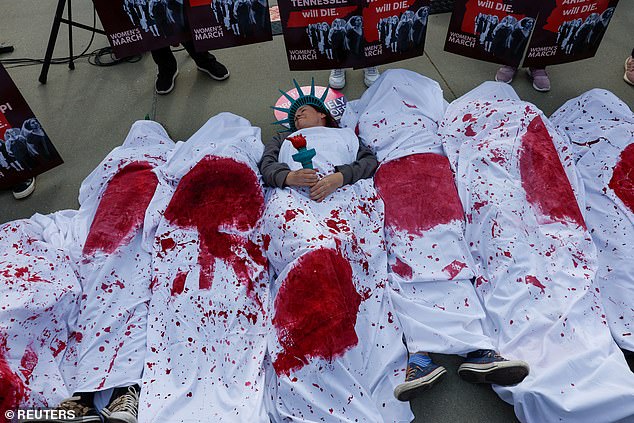
Abortion rights advocates participate in a ‘die-in’ outside the Supreme Court
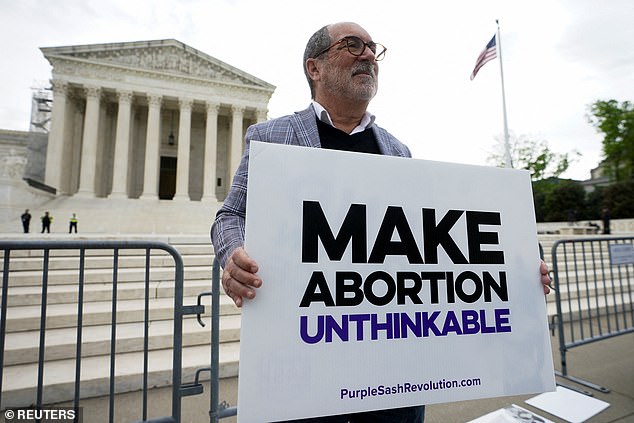
An anti-abortion activist outside the Supreme Court on Wednesday as the court hears arguments on Idaho law banning abortion in almost all situations
Oral arguments are taking place in the cases of Moyle v. United States and Idaho v. United States.
The Biden administration argues that the federal Emergency Medical Treatment and Labor Act (EMTALA) can replace state law criminalizing abortion in limited circumstances.
But Idaho rejects that argument, claiming it is a federal power grab and that the law does not require doctors to provide specific medical treatments or require hospitals to perform abortions.
This is the second abortion-related case the Supreme Court has heard in recent weeks following arguments over the medical abortion drug mifepristone.

An anti-abortion activist holds a sign before oral arguments on Idaho’s near-total abortion ban
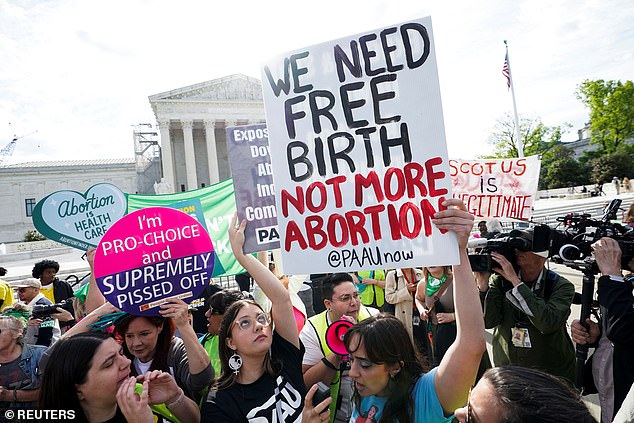
Pro- and anti-abortion rights protesters face arguments in front of the Supreme Court on Wednesday
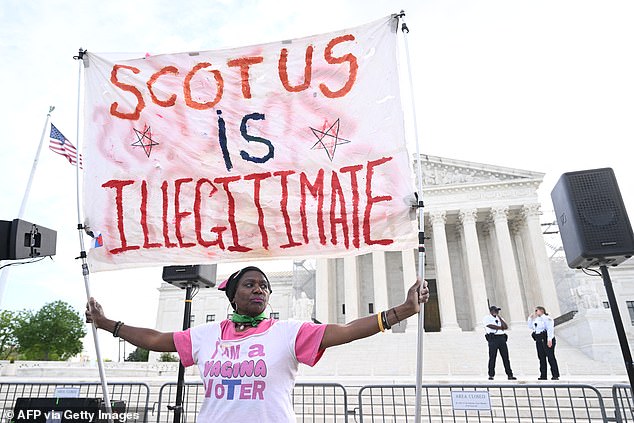
An abortion rights activist stands outside the Supreme Court on Wednesday morning
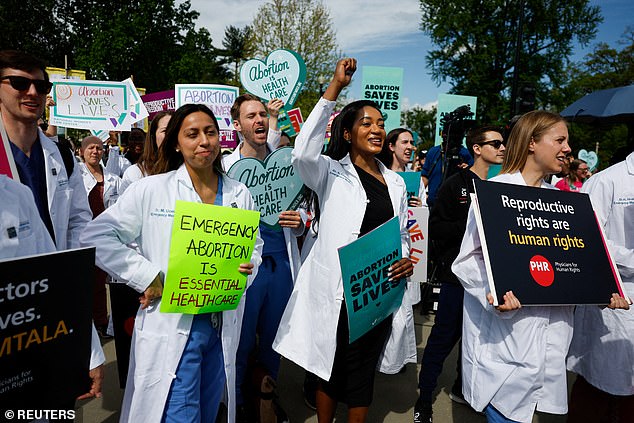
A group of doctors join pro-abortion rights activists who took part in a ‘die-in’ outside the Supreme Court as it heard arguments in the case of Idaho v. United States
After the Supreme Court overturned Roe with the 2022 Dobbs decision that ended the constitutional right to abortion, Idaho was one of more than a dozen states that took immediate action to ban abortion, with limited exceptions.
Idaho law makes it a crime to perform an abortion except in very limited circumstances, including saving the life of the mother, rape or incest. The state’s exception focuses on life, but not on the “health” of the mother.
The case in question began nearly two years ago, when the Biden administration filed a lawsuit. It argued that EMTALA could be used in some limited cases in the state because it requires emergency rooms to provide “necessary stabilizing treatment.”
A district court agreed, blocking the Idaho law from taking effect in August 2022 to the extent the ban violated EMTALA.
The 9th Circuit Court of Appeals denied the state’s request to stay the district court’s ruling while an appeal was heard.
The state and its Republican-controlled legislature then took the case to the Supreme Court.
